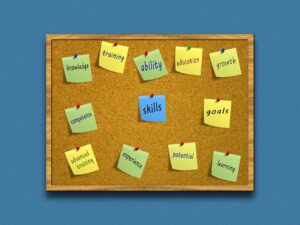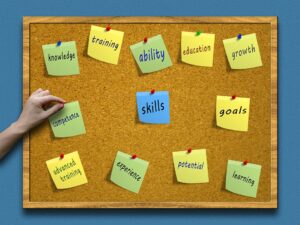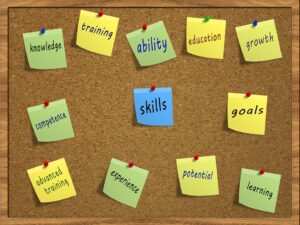
Motivation is a powerful and often elusive force. It drives individuals and groups to achieve their goals, overcome obstacles, and thrive in challenging environments. However, the nature and source of motivation vary significantly among individuals. Therefore, tailoring motivational strategies is essential for maximizing impact. This article delves into the diverse aspects of motivation and offers practical strategies for customizing motivation techniques to meet various needs.
Understanding Motivation
At its core, motivation is the process that initiates, guides, and maintains goal-oriented behaviors. Psychologists classify motivation into two broad categories: intrinsic and extrinsic. Intrinsic motivation comes from within—a passion for an activity or the joy of mastering a skill. Extrinsic motivation, on the other hand, comes from external rewards such as money, praise, or social recognition.
Theories of Motivation
Several psychological theories provide frameworks for understanding motivation, including:
-
Maslow’s Hierarchy of Needs: This theory posits that humans have five levels of needs, ranging from physiological to self-actualization. Each level must be satisfied before progressing to higher levels.
-
Self-Determination Theory: Focuses on intrinsic motivation and emphasizes the role of autonomy, competence, and relatedness as essential components for fostering motivation.
-
Goal Setting Theory: Suggests that setting specific and challenging goals can significantly enhance performance. Goals should be measurable and attainable.
The Importance of Tailoring Motivation
Recognizing that one size does not fit all is crucial when it comes to motivation. Individuals’ backgrounds, experiences, and psychological profiles shape their motivational drivers. Factors such as age, culture, personality, and life circumstances play a significant role in how motivations are formed and sustained.
For example, a younger employee might be more motivated by career advancement opportunities and social recognition, while an older employee might prioritize job security and work-life balance.
Strategies for Effective Motivation
To develop a personalized motivation strategy, consider the following steps:
1. Assess Individual Needs
Engage in open conversations with individuals to assess their motivational needs. Use surveys, one-on-one meetings, and feedback sessions to gain insight into what drives them.
Regular assessments help to adapt strategies over time, ensuring ongoing relevance.
2. Foster Intrinsic Motivation
Cultivating intrinsic motivation is fundamental for long-term engagement. Techniques include:
-
Providing Autonomy: Allow individuals to take ownership of their tasks. When they feel in control, their intrinsic motivation often increases.
-
Encouraging Mastery: Offer opportunities for skill development and training. A culture of continuous learning can significantly enhance self-efficacy.
-
Promoting Purpose: Help individuals connect their roles to the broader organizational mission or personal values. When people see the impact of their work, motivation naturally increases.
3. Leverage Extrinsic Motivation
While intrinsic motivation is vital, extrinsic factors still hold substantial weight. Tailor your extrinsic rewards based on individual preferences:
-
Recognize Achievements Publicly: Use platforms that resonate with your team—whether that’s during a team meeting, through company newsletters, or social media.
-
Customize Rewards: Provide options to choose from. For example, some may prefer cash bonuses, while others might value extra time off or opportunities to attend conferences.
4. Set Clear Goals
Effective goal setting is more than just establishing targets; it involves creating SMART (Specific, Measurable, Achievable, Relevant, Time-bound) goals.
Ensuring that individuals understand how their goals align with larger organizational objectives fosters a sense of belonging and commitment.
5. Create a Supportive Environment
A supportive environment is essential for motivation. Leaders should:
-
Promote Team Collaboration: Encourage teamwork, which can lead to shared motivation and a sense of community.
-
Provide Constructive Feedback: Offer regular, actionable feedback. Recognizing both efforts and potential improvement areas helps fuel motivation.
6. Encourage Resilience
Motivation can wane in the face of setbacks. Encourage resilience through:
-
Mindfulness Training: Teaching stress-reduction techniques helps individuals cope with challenges.
-
Building a Growth Mindset: Foster an environment where failure is seen as a stepping stone to success, encouraging individuals to learn from mistakes.
Conclusion
Motivation is not a static concept but a dynamic and individual experience. By understanding the various layers that contribute to an individual’s motivation and implementing tailored strategies, leaders and organizations can create environments where everyone can thrive.
Customized motivational strategies not only maximize impact but also cultivate a culture of engagement, resilience, and shared success. Thus, investing time and resources in understanding and tailoring motivational approaches is vital for shaping a motivated workforce capable of facing the challenges of today’s complex world.
In a rapidly evolving landscape, staying attuned to the motivational needs of individuals can make all the difference—transforming challenges into opportunities, and potential into achievement.







